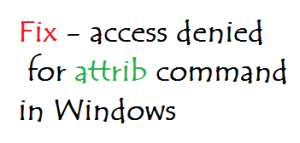After years of rumour suggesting that Windows 10 would be last version of Microsoft’s OS which was revolution to the personal computing space. We can all agree that Windows has been a big part of our childhood even though so many people including myself have drifted towards the Apple ecosystem.
Microsoft unveiled the newest major update to the Windows Operating system called Windows 11 recently and it was informed that it would be available as a free update for all Windows 10 users during the fall later this year. So, that means any computer which is compatible with basic requirements will get Windows 11 for free.
Let’s see about the minimum requirements and how you can get them in your computer or test it here.
Windows 11 Minimum requirements
Irrespective of which computer or processor you hold, Microsoft has a basic requirements that needs to be met to make sure that the computer can actually install Windows 11. These are the basic requirements.
This is what is shown in the Microsoft website. The most important things from this list are:
- The computer should run a processor that has at least two or more cores in it.
- The expected Clock speed is 1GHz or higher.
- A basic RAM of 4GB is expected to even install Windows 11. It’s always a good idea to have a higher than 4GB ram.
- Internal storage or 64GB has expected whether it’s HDD or SSD it doesn’t matter. A fresh install of Windows 10 takes about 15GB right now so it’s reasonable to have a 64GB minimum as storage for the proper functioning of the computer.
- The computer needs a TPM security of 1.2 or higher. If you are not aware of TPM, it’s the Trusted Platform Module. It’s an international standard maintained for a secure processor and microcontroller to make sure it’s secured using cryptographic keys. Since Windows provide software for all OEMs, it’s reasonable that they are looking for a decent amount of in-device security.
Also, some requirements are given these days like a 9 inch screen which I’d assume everyone has. Also, who doesn’t have at least DirectX 12 Compatible graphics card. I don’t think any manufacturer is making those old graphic cards.
Apart from this basic requirements, there are also compatibility tests that are required for your to make sure your computer actually supports Windows 11. There are two ways to actually check compatibility. You can do it manually or by using the special tool Microsoft has developed to do just that. I’d say the Tool does the job pretty good if you as me and you should definitely go for it.
How to Check Windows 11 Compatibility Manually
Now, to check Windows 11 Compatibility without the user of PC Health Check tool, you might need some computer knowledge. If you do, then this tutorial might be easier than for someone who doesn’t.
So, to check certain computer information like Storage, RAM and all, you need to go to System Settings.
How to Check RAM & CPU Cores
- Go to Start Menu and then click on Settings from the bottom left corner of the menu.
- In the Settings app, choose System.
- Under System Settings, Choose About from the sidebar which would show the system info.
- Under Device Specifications, you can check the CPU cores and RAM Information.
How to Check TPM Information
- Follow the steps from How to check RAM & CPU Cores section.
- In the same About section Under System Settings, scroll down and you will find an option called BitLocker settings. Click on that once you find it under Related Settings.
- In the new window that appears, Click on TPM Administration at the bottom left corner of the window as you can see below.
- You will be taken to a new window that looks like this. As you can see this is all about the TPM that I mentioned in the Basic Requirements section.
- Under Status, it says that TPM is ready for use which mean TPM is active in the PC.
- To see the version of the TPM, check under TPM Manufacturer Information, the Specification Version is said to be 2.0 which is the required version for Windows 11.
How to check Storage in the PC
The only way is to calculate how much GB is allocated for each and every drive.
- Open a File Explorer and click on This PC on the side bar. This PC is basically the My Computer we used to have in the earlier version of Windows.
- As you can see in the image above, there is only one Drive under Devices and drives. The total capacity is 475GB which means that’s the total storage of the computer which is obviously way more than the required 64GB. But there is only a drive because no drive partition was done on my computer. But your PC might have partitions which means you need to add the total memory of each drive and that would be your computer memory.
How to check Graphic Card Information
- Open Run dialog box using Ctrl + R. In the run dialog box, type in msinfo32 and hit Enter or OK.
- In the Window that appears, on the sidebar, under System Summary, expand Components and then Choose Display. Once you click Display, all the graphic card-related information will be shown on the right side of the window.
As you can see, My graphic card is Intel(R) UHD Graphics 620 which is pretty decent for the Lenovo Laptop I use. Now, this graphic card informaiton doesn’t give you information about DirectX capabilities but you can check those information in Google if you want so.
How to check DirectX version
- Open Run Dialog box using Ctrl + R. In the dialog box, type in dxdiag and hit Enter or click OK.
- In the window that appears, you will see all DirectX related information as you can see below.
As you can see, this is a DirectX Diagnostic tool which I’m using to find out the version of DirectX. The last information in the DirectX version is DirectX 12 which is what is required for Windows 11.
As I said earlier, its a lot of steps to find out the version all by yourself. The compatibility Tool is probably a better way to actually figure out the possibility of installing Windows 11 in your computer.
How to Check Windows 11 Compatibility using Tool
As I said earlier, if you choose to check Windows 11 compatibility via this tool Microsoft developed, follow the steps below.
- Go to https://www.microsoft.com/en-us/windows/windows-11. This site has all the new information about the new Windows 11.
- After getting through all the info and advertisement for Windows 11, you will find a section called Check for Compatibility. Click on Download App in that section.
- You will be taken to a new tab and the app starts downloading in the browser that you are using.
- Once the dowload is completed, click on the installer file as you can see here for the installer window to show up where you could install the PC Health Check app.
- Now, you will see the Installer window for the App. As you can see it will have all the software license terms. If you choose to read it, go ahead. Nobody does anymore. Once you are done or skipped, agree the terms by checking the checkbox and clicking on Install when it enables.
- The App starts installing on the next page and waits for a couple of seconds and once it’s done, you will see this screen. Since we are choosing this app to check compatibility, I’m assuming we will open it right away. Check Open Windows PC Health Check and then click Finish.
- The app will launch and it will look like the screenshot below. In the PC Health Check App, you will find many options like Backup, Update, PC Details, and much other useful information. So, it’s not just a tool to check Windows 11 compatibility.
- So, to check compatibility, Click on the Check Now in the Introducing Windows 11 section at the top of the PC Health Check app.
- This takes a couple of moments and if your computer is compatible you will see something like the screenshot below which means your computer can install and run Windows 11. Now, all you have to do is wait for its official release later this year and install it.
- In case if your computer doesn’t support Windows 11, you will see something like this in the image below. This basically means either the computer you are using doesn’t fit the basic requirements or it has some other manufacturer incompatibility that’s stopping you from installing Windows 11 in the PC as you want.
Windows 11 Compatibility Checker Tool
You can also quickly check Windows 11 compatibility with this 3rd party tool from Github.
- Go to WhyNotWin11 Github page
- Click “Download here” link to download the software.
- Click Run to check if your Computer meets Windows 11 requirements.
The choice you have is to stick to Windows 10 which is not bad at all. Or you could go ahead and get yourself a modern PC that would support Windows 11 like the SurfaceBook or even a Dell Laptop.
Ready to Check Windows 11 Compatibility?
It hasn’t been so far reported that this PC Health app works perfectly. I read online that there has been some problems using the PC health app because newer computers are also getting incompatibility error messages that Windows 11 doesn’t support.
Either way when the software arrives later this year, you could be sure whether your PC is compatible or not.
Other Windows Posts:
1. How To Disable Cortana in Windows 10
2. Turn On Bluetooth On Windows 10
3. How to Factory Reset Windows 10



























